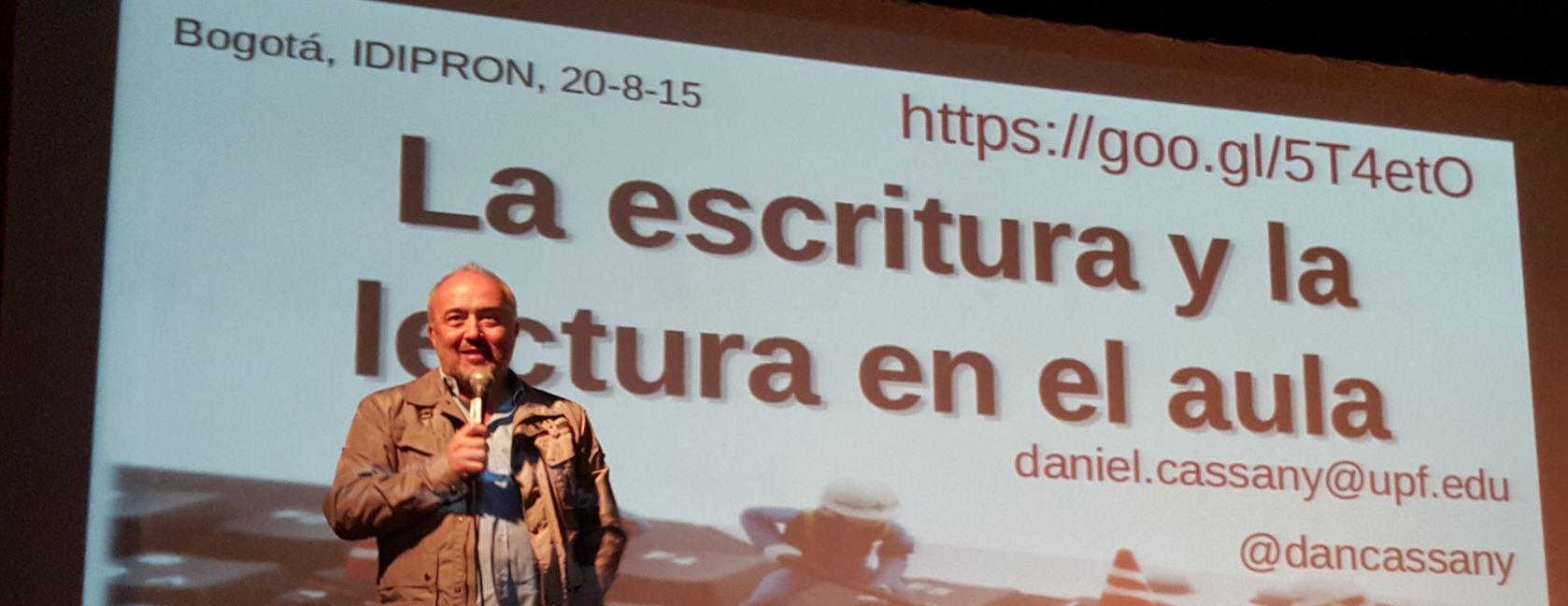Interests
- Written composition
- Training in written communication for business companies
- Discourse analysis and popular science
- European Language Portfolio
- Critical literacy
Written composition
The production of written discourse, composition, is the area of my early research period. A great many of the reviewed publications display various perspectives within the field, with a clear aim to disseminate among teachers and the community: the processes of composition (Descriure escriure, 1988, degree dissertation, and Construir l'escriptura, 1999), teaching composition (syllabus and activities: Ensenyar llengua, 1993; assessment: Reparar l'escriptura, 1993), training professionals(La cuina de l'escriptura, 1993).
Other later research, like my PhD dissertation or the analysis of popular science, develop more specific areas of written discourse.
Training in written communication for business companies
My doctoral dissertation deals with training in specialised writing and communication (business, technical, legal), in business and institutional environments, with lawyers, economists, engineers and managers. [I apologise here to anyone searching online... because I have not yet found the time to update and upload the files; I promise I will..]. In any case, my book Esmolar l'eina (Afilar el lapicero, in Spanish, Sharpening the pencil) includes the most innovative parts of the PhD.
In an initial period of my career, I worked for various companies and institutions from the abovementioned sectors, doing training and counselling activities. My PhD is an analysis of that experience, and it uses the corpora and materials that I developed at that time.
Discourse analysis and popular science
For over five years (1997-2002) i worked in a fascinating, emerging field, the public understanding of science, i.e. the study of linguistic resources used by experts (scientists, journalists, mediators) to get the general public, who are lay people in biology, astronomy or genetics, for instance, to understand the most important milestones as they happen in these fields. In particular, we analysed a press corpus of science-related news items.
The group was part of the Network for discourse studies (CIRIT, PB-96-0291), which coordinated several groups. The results of this research have been published in a number of papers: Cassany & Martí (1998), Cassany, López & Martí (2000) and Calsamiglia & Cassany (1999). The paper entitled "Análisis del discurso de la divulgación científica" (analysis of popular science) is an introduction to the group, and at the Conference of the Chilean Society for Linguistics, in Osorno, there is also a presentation of the overall work of the group.
In my boook Rere les línies. Sobre la lectura contemporània (Behind the lines. On contemporary reading) there is also a chapter on this matter. See the more detailed account of research projects.
European Language Portfolio
From 2004 to 2007 I coordinated, for the whole of Spain, the team of teachers and researchers who created the didactic materials of the European Language Portfolio (ELP for short), following guidelines from the Council of Europe (from theEuropean Language Portfolio project). we produced the learner's ELP, the learner's guide, the teacher's guide-very long-, and also an empirical research with about 500 informants. There is a report in pdf file format that is a compilation of all this material, in over 200 pages.
All of the didactic and research materials can be found on internet in the Spanish Education Ministry's Proyectos Europeos[which often changes its name and URL, which makes it tricky to link... but can be found easily with a browser). For more information on the project, it is best to visit the Council of Europe's webpage (ELP, Europass, etc.). Some of the papers in this field were published in the volume I edited in 2006, El Portfolio Europeo de las Lenguas y sus aplicaciones en el aula.
Critical literacy
Since 2007 I have been working in this new research area, which in Catalan we is called literacitat, as an equivalent to literacy in English (also translated as alfabetisme, escripturalitat, cultura escrita or, simply, lectura i escriptura). We study reading and writing practices, from a sociocultural point of view, according to New Literacy Studies. See our webpage on this, where you can find uploaded all the research papers and projects as well as information about the group: Critical Literarcy.
There are three books that include work done in this area: Rere les línies. Sobre la lectura contemporània (2006), Prácticas letradas contemporáneas (2008) and Para ser letrados (2009).

